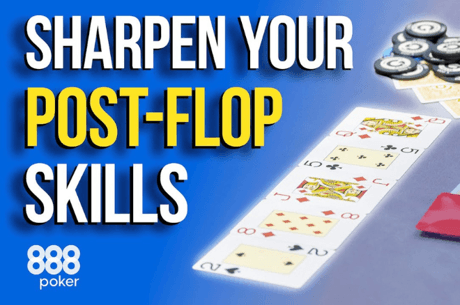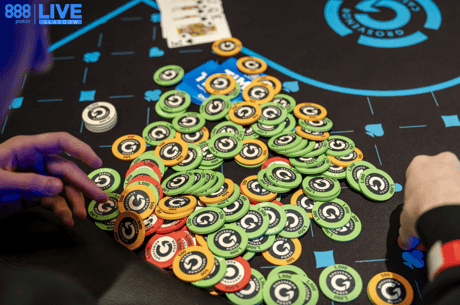Practical Probability in Poker: A Quiz

Poker math is actually pretty simple. Memorize a few basic drawing and heads-up odds, learn some rudimentary tools for calculating probability by counting outs, and learn how to add up quickly the size of the pot for which you're playing, and you pretty much have all the math you need to play winning poker.
But that's only part of the challenge. You must also learn when there's more than just math to think about.
Below is a short five-question quiz designed to test your knowledge of poker math as well as other important considerations. Read each question carefully and make your selection, then scroll downward to read what the correct answer was and an accompanying explanation before moving down to the next question.
Unless stated otherwise, all games described are 10-handed, $1/$2 no-limit hold'em, played with a $300 effective stack and with a standard deck. In all instances, if none of the answers are exactly correct, give the answer you think is most nearly correct.
1. You have two suited cards and flop a flush draw.
The answer is 19 percent of the time.
With two of a suit in your hand and two on the board, you will turn a flush when one of the 9 remaining unseen cards of your suit hits the turn. There are a total of 47 unseen cards. That's 19.15 percent of the time. The suit and prior action are irrelevant.
2. You have two suited cards and turn a flush draw.
The answer is slightly more frequently than in question 1 above.
With just one card to come, there are now only 46 unseen cards. That means the probability that one of those will make your flush is a tiny bit higher — 19.57 percent of the time — than the probability of turning a flush on the turn.
3. You are under the gun holding K-K and raise to $15. Everyone folds except for one player who reraises to $45.
The answer is actually it depends on what has happened in prior hands.
Looking at it strictly in terms of probability, your opponent on average will be dealt A-A once every 221 hands or roughly 0.5 percent of the time. However, he will not necessarily reraise to $45 with pocket aces every time he holds them. He may also sometimes three-bet to $45 when he doesn't have A-A.
While there's no way to be certain what he holds, you can at least begin to estimate the chances he has exactly A-A based on his prior betting action, considering as well the betting practices at the table in general (including your own). All of which makes "it depends on what has happened in prior hands" the best choice.
4. You are in the cutoff seat with J♥J♦. A player under the gun raises to $12. Two players call him before the action gets to you. You reraise to $30. The button calls as does the preflop raiser and the two callers.
The answer is roughly 12 percent of the time.
Though some wags might say "either it happens or it doesn't, so the odds are 50-50," the truth is that given the fixed number of cards in the deck and the fact that some of them are exposed to you (namely, the two in your hand), it is possible to know precisely what the probability is of certain events — like flopping a set, for example.
It is immutable. The probability of improving to a set or better on the flop when starting with a pair is roughly 12 percent, regardless of the prior betting action.
5. It's the river and the board is 7♦5♦A♣9♠J♦. You have K♦10♦ for the second-nut flush. Your lone opponent has led the betting the entire way. Preflop he raised to $15 under the gun and got three callers, including you. He bet $40 on the flop and got two callers. He then bet $100 on the turn with you as the only caller. Now on the river he shoves for $200. The pot is $580. Only one hand, the nut flush, can beat you. Does it make sense to call your opponent?
The best answer is the third one — "Since you're getting much better than even money, you should surely call."
"It's a fold" is wrong because that fails to consider the entire betting history of the hand. Meanwhile even though the first choice ("It's an obvious and immediate call") reaches the same conclusion as the better answer regarding the villain's betting action, the analysis wrongly focuses on the probability of being dealt a hand rather than the probability of having the hand that is being represented on the river.
Finally, if you answered "There are too many variables to think about," you might want to think of a different hobby.
Conclusion
Though it is essential for the winning poker player to know basic poker math, focusing exclusively on it mistakenly ignores the importance of an opponent's betting action.
Ashley Adams has been playing poker for 50 years and writing about it since 2000. He is the author of hundreds of articles and two books, Winning 7-Card Stud (Kensington 2003) and Winning No-Limit Hold'em (Lighthouse 2012). He is also the host of poker radio show House of Cards. See www.houseofcardsradio.com for broadcast times, stations, and podcasts.










